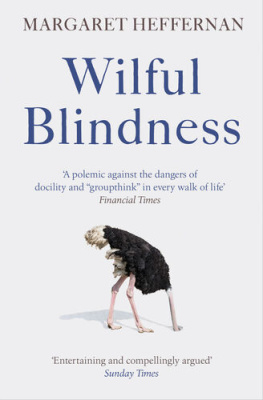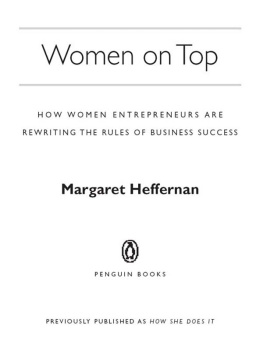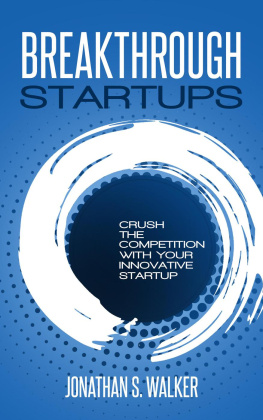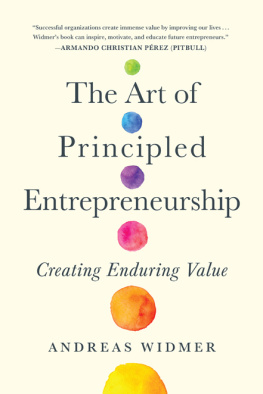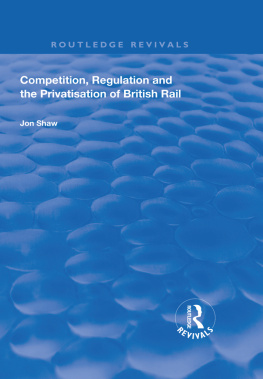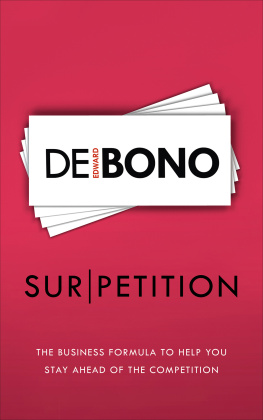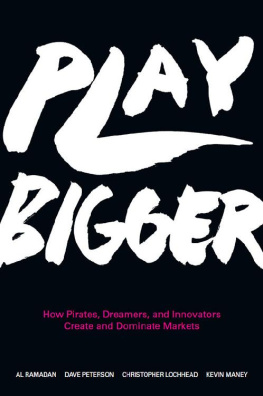A Bigger Prize

ALSO BY MARGARET HEFFERNAN
Willful Blindness: Why We Ignore the Obvious at Our Peril
Women on Top: Redefining Power and the Nature of Success for the 21st Century
The Naked Truth: A Working Womans Manifesto on Business and What Really Matters


Copyright 2014 by Margaret Heffernan
Published in the United States by PublicAffairs, a Member of the Perseus Books Group
All rights reserved.
No part of this book may be reproduced in any manner whatsoever without written permission except in the case of brief quotations embodied in critical articles and reviews. For information, address PublicAffairs, 250 West 57th Street, 15th Floor, New York, NY 10107.
PublicAffairs books are available at special discounts for bulk purchases in the US by corporations, institutions, and other organizations. For more information, please contact the Special Markets Department at the Perseus Books Group, 2300 Chestnut Street, Suite 200, Philadelphia, PA 19103, call (800) 810-4145, ext. 5000, or e-mail .
Book design by Janet Tingey
Library of Congress Cataloging-in-Publication Data
Heffernan, Margaret, 1955
A bigger prize: how we can do better than the competition / Margaret Heffernan.First edition.
pages cm
ISBN 978-1-61039-292-1 (ebook)
1. Business networks. 2. Competition. 3. Strategic alliances (Business) 4. Organizational effectiveness. 5. Creative ability in business. I. Title.
HD69.S8H445 2014
658.046dc23
2013044641
First Edition
10 9 8 7 6 5 4 3 2 1
For Lindsay
CONTENTS


On a beautiful August day, the New Hampshire sunshine streams through the tall pine trees surrounding the Cheshire County Fair. On the outer perimeter, cart horses and pigs are scrutinized and judged, some garnering rosettes, others being returned to their owners, for whom they are both livelihood and pets. Kids try their hand at milking cows and goats or driving their first tractor. After lunch, Slackwire Sam unicycles up and down his loose clothesline; in the far corner of the fairground, tug-of-war is scheduled for the end of the day.
An inner circle of food stalls offers fried dough, blossoming onions, corn dogs, and cotton candy. Families four abreast carry paper cartons of calamari and fries or cones overflowing with fluorescent ice cream. Clutching goldfish swimming in plastic bags, three young girls compare prizes while twin brothers walk side by side, sporting matching T-shirts: THE 2NDAMENDMENT: AMERICAS ORIGINAL HOMELAND SECURITY. In the dusty heat, we are all sauntering slowly, eating, talking, and seeking out small patches of shade, when the announcement comes over the loudspeaker: the demolition derby is about to begin!
Gentlyit is too hot to rushthe direction of the crowd turns toward the central stadium and up the bleachers, where seats in the shade are soon occupied. Conceding defeat, the rest of the spectators shift reluctantly toward the sunny side, spread out, and don hats. Aficionados place towels carefully on their laps.
In the center of the arena, eight rusty wrecked cars rev their engines. Car 49 sports flags decorated with skulls; car 38 proudly promotes its sponsorWB Paint Worxin hand-painted electric red, white, and blue logos. Car 72 displays steer horns on its roof, while car 3 advertises McCues billiard hall in nearby Keene.
Are you ready? the loudspeaker blares. The crowd starts to join in the countdownfive four three two oneand the cars reverse out of their alignment, struggling to gain traction in the dust. Now theyre off, whirling and spinning as they drag themselves into collisions. The goal is demolition, and the last car left running wins the prize.
Get serious, guyswe need some contact!
As the cars drag themselves around the arena, radiators steaming, the spinning tires throw up dirt made damp from oil spills and water. The crowd screams and ducks as the dirt goes flying, landing on laps and smearing my sunglasses. Now I understand why the woman next to me brought her towel: this is part of the fun.
Eileen, you gotta hit somebody!
Driving car 23, Eileen cant possibly hear the crowd through her crash helmet, but she knows what to do. Whizzing around, she heads off to smash into car 49, an easy target as its undercarriage drags along the ground. Then she backs up and charges into the corner where Kyle in car 25 is stucktrapped by three dilapidated vehicles that back up, accelerate, and smash into him. The radiator explodes against the arena wall, the car accordions, and Kyle is out of the game. Once a car cant move, all of the rest move in to pulverize it.
With doors, hoods, and fenders now dispersed across the dirt, just four vehicles remain. Car 72 can only drive in reverse now and limps with a flat tire; everyone is starting to lose power, but the derby cant finish until one more goes down. As if sensing blood, cars 35, 66, and 72 head for Eileen, but she outmaneuvers them, gets behind 35, and, catching it on her front fender, rams it against the wall.
Weve got our three! and the crowd erupts into applause as the local fire brigade walks onto the field to clear the wreckage and prepare for the final.
As I sat in the stands on that beautiful August day, I couldnt help but think that I was watching some kind of parable. All around the world, rusty, dilapidated institutions and ideas seemed to be crashing into each other, driven by a competitive spirit that offered the brutal simplicity of winners and losers. After five years of corporate breakdowns, ethical corrosion, financial crashes, stalled politics, and overheated rhetoric, all that remained was the grim drama of the contest.
Wherever I looked, competition had become the default motivator, as though, exhausted and demoralized, no culture or politics could proffer a superior driver or decisive alternative. As complex social, financial, legal, and environmental challenges piled up on one another, a kind of despair seemed to descend: we dont know what to do, let the market decide. Put it out to competition, make people compete, the best will rise to the topwont it?
Fans of competition regularly looked to Charles Darwin for intellectual support. Most cited survival of the fittest without recognizing that the term came not from Darwin but from Herbert Spencer, who had handily translated natural selection, giving it his own favored political spin. Since a world of winners and losers is natural, the social Darwinians argued, we would do better to tone our competitive muscles than question the ways of nature. We are, after all, the product of an evolutionary contest in which the best of our genetic inheritance has survived while the rest has perished. Although even Darwin scholars couldnt agree whether Darwin himself would have been a social Darwinian, nature itself seemed to provide the ultimate alibi.
Social Darwinians were hugely aided by the many people who were familiar with Richard Dawkinss The Selfish Gene but who had never read it. No wonder publisher Tom Maschler suggested that the book might better be called
Next page

